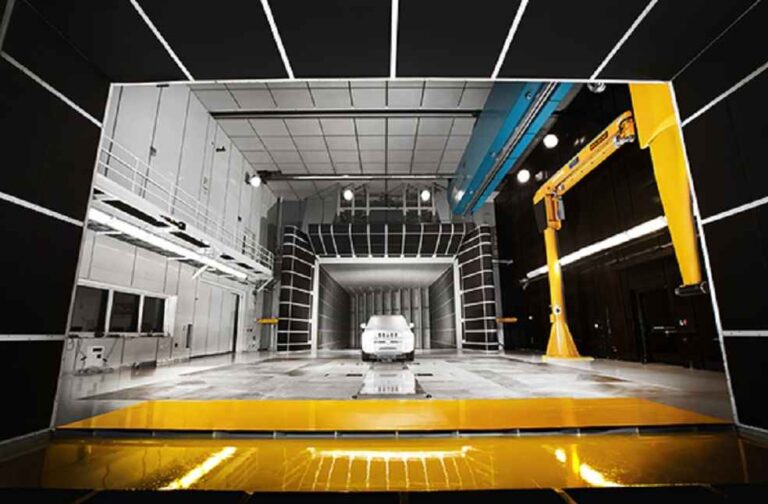Stellantis Invested $29.5 million in advanced Moving Ground Plane (MGP) wind tunnel tech at its research and technical center in Auburn Hills, Michigan. The enhancement aims to streamline aerodynamics testing for electric vehicles (EVs) and reduce the drag that affects energy efficiency, extending the driving range of Stellantis EVs.
The upgraded wind tunnel enables static test vehicles to simulate real-world travel conditions accurately. By employing MGP technology, the system reduces airflow resistance from wheels and tires, which can contribute up to 10% of total real-world aerodynamic drag. An intricate system of five belts, cushioned by air, allows wheels at each corner to move realistically, with a central belt running longitudinally under the vehicle to replicate on-road conditions, offering precision in aerodynamic assessments and enhancements.

“That’s what makes this investment so critical. By reducing drag, we improve electric-vehicle range and, ultimately, the overall customer driving experience,” said Mark Champine, Senior Vice President and Head of North America Engineering Technical Centers at Stellantis.
The MGP technology at Auburn Hills is part of Stellantis’s broader aerodynamic strategy, benefiting multiple brands across the company. Unlike conventional wind tunnels, this facility incorporates advanced automation, enabling rapid modifications to wheelbase and track configurations in minutes—a task that typically takes up to two hours. This acceleration in data collection and testing helps Stellantis significantly reduce vehicle development timelines.

Notably, while Stellantis has deployed MGP technology at other locations, these sites cater to smaller vehicle platforms. The enhanced Auburn Hills wind tunnel now has the capacity to accommodate larger vehicles, especially the STLA Large and STLA Frame platforms, which align with the company’s vision for EV expansion.
Central to the MGP equipment, a 137-ton measuring platform and turntable sit on a concrete foundation, supported by a specialized steel structure. The tunnel, operational since 2002, can generate wind speeds exceeding 160 mph, providing critical infrastructure for next-generation EV development.
By prioritizing innovations like the MGP wind tunnel, Stellantis continues to align its technical advancements with customer needs, focusing on sustainable, efficient, and high-performance electric vehicles.
EV WORLD | Ford CEO Praises Xiaomi EV, Exposes U.S. Lag in Electric Vehicle Innovation





